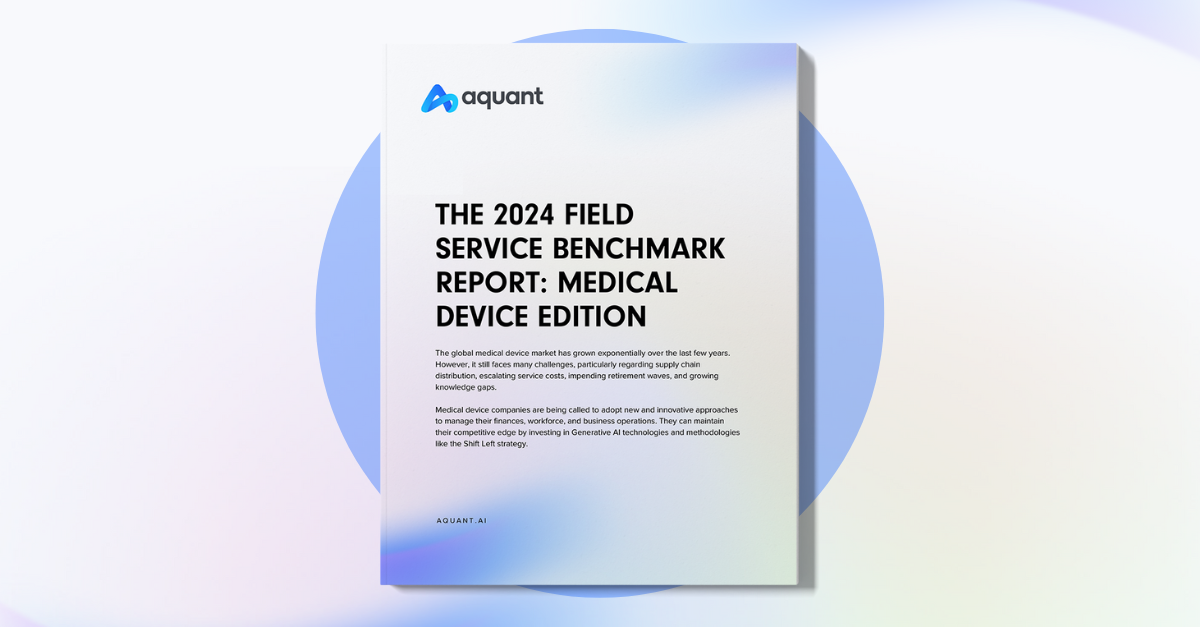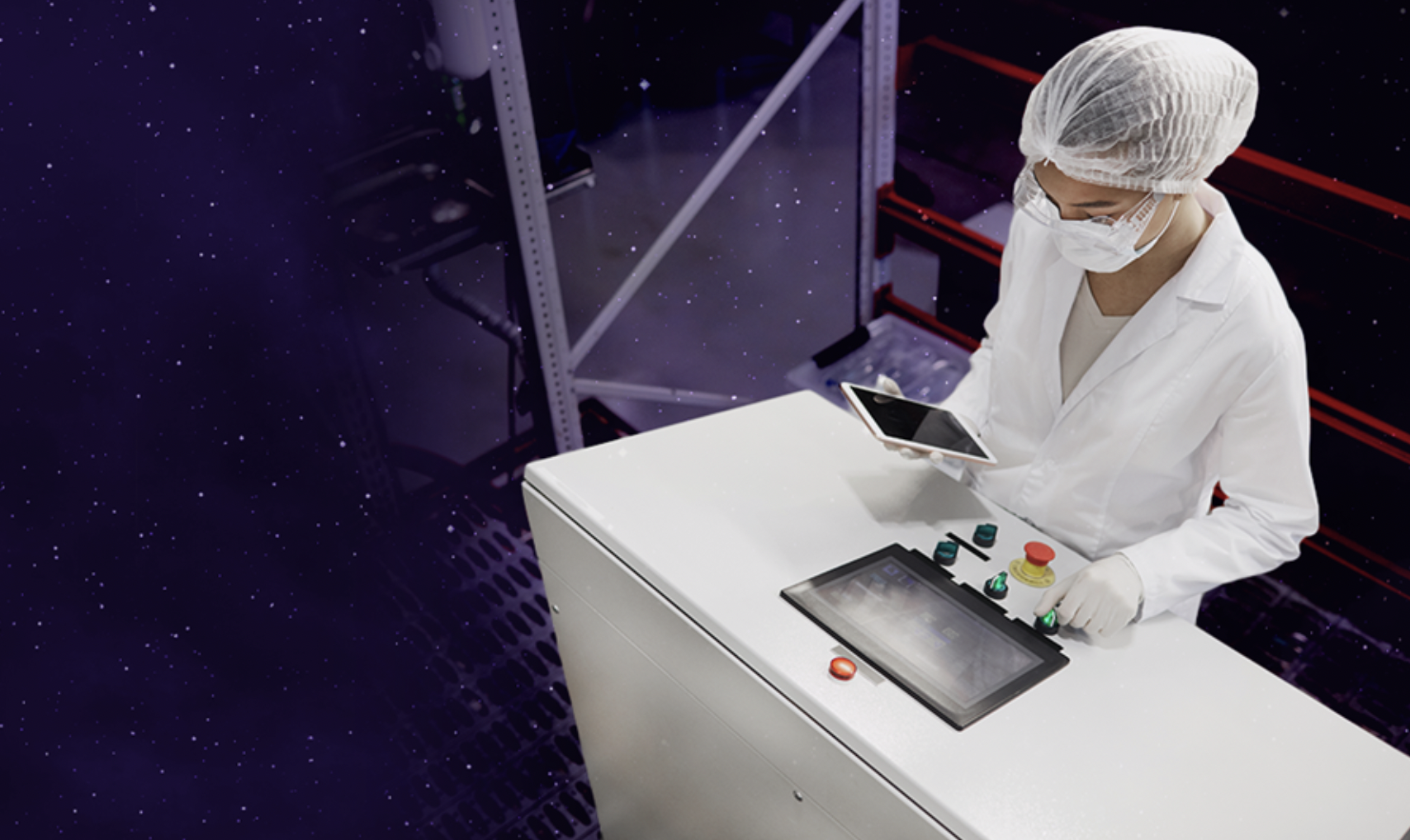Throughout the service industry, standards for customer experience are higher than ever. On each episode of Aquant’s Service Intel Podcast, we sit down with leaders that are raising the bar and creating incredible experiences for their customers. These top names in the industry have all agreed to share what they’ve learned about navigating today’s service landscape so our listeners can not only get inspired but put their own bar-raising service plans into action.
Recently, we sat down with Anthony Bacak: Director of Global Field Services at National Instruments. Anthony’s story as a service leader is personal. He shares his experience raising a daughter with down syndrome and how she inspired him to help build an even more inclusive culture at National Instruments. Today, his company goes above and beyond to account for employees’ unique needs with diverse physical and mental abilities — from inclusion resource groups to understanding what each team member needs to succeed in their role.
Here are just a few of the many great takeaways from our conversation with Anthony.
Sometimes You Need to Take Change Into Your Own Hands
A couple of years back, National Instruments was working to improve its company-wide DEI efforts. Raising a daughter with down syndrome and seeing firsthand what she was capable of, Anthony wanted to ensure his company’s initiatives accounted for team members with different abilities.
So he took it upon himself to speak up and help build an even more comprehensive approach to DEI. He discovered that another employee had brought up the same topic a couple of weeks before he did. Together, they formed National Instruments’ first “inclusion resource groups”. If you’re hesitant to speak up and spark change at your company, Anthony’s experience is an excellent reminder that you’re likely not the only one that feels the way you do about an issue.
Inclusion Starts with the Interview Process
Imagine you’re interviewing someone that has a stutter. Do you automatically come to conclusions about their job performance — even though you’d be impressed by the interview otherwise?
Or maybe you’re interviewing someone with a vision impairment and they ask you for help reading something during the interview. Anthony says it’s important to educate team members that this is not a sign of weakness and no one should be ruled out of the interview process because they need a bit of extra support or communicate differently. It’s so important to stay focused on what they can bring to your team.
Anthony has prioritized education and open communication about what it means to have a different ability so employees can more easily be attentive to it. Will people make mistakes as they learn to approach disabilities differently? Of course. And that’s ok, he says. The most important thing is leading with empathy and forgiving people when they say the wrong things. It’s an ongoing learning process.
Disabilities Aren’t (Only) What You Think They Are
At National Instruments, inclusion resource groups aren’t limited to the disabilities we can see. Anthony wanted to challenge how people define disabilities and create spaces for team members with mental illness, migraines, dyslexia and other largely invisible disabilities.
He shares how his own experience with migraines expanded his understanding of what disability looks like. It’s important to understand that a team member with migraines isn’t the same person they normally are when they have one. And that sometimes a migraine can last for weeks. Accommodating them so they can thrive in their role is so important. While this is just one example, it applies across the board when it comes to invisible disabilities.
Sometimes the Smallest Adjustments Make the Biggest Difference
Prioritizing what each employee needs to successfully navigate their disability and their role at National Instruments is often simpler than most would expect. In the case of migraines, it might be using a different light bulb in the office. Anthony shares how the wrong kind can set off a multi-day migraine.
For someone who is dyslexic, fully justified text can be complicated to read. Of course, it isn’t done intentionally by the sender, but once someone is educated about this, that little change can be dramatic for a dyslexic coworker.
Small changes will lead to a thriving team – across all abilities. We have a tendency to brush these things under the rug and “tough it out” says Anthony. But no one should have to do that.
What’s Comfortable for You Might Not Work for Someone Else
Anthony shared the importance of understanding each person’s boundaries and comfort zones. Imagine you have a team member with social anxiety. For them, it’s difficult to get up every morning and face a team of 20 or 30 people at the office, but they do it anyway. And then you schedule a happy hour or holiday party and they decline.
This doesn’t mean someone isn’t interested in being part of the team. What’s fun for you might be exhausting for them after a long, social week. While it isn’t easy, not jumping to conclusions because of the activities someone chooses to opt out of is so important.
Listen to the full episode for more of our conversation with Anthony. And subscribe to the Service Intel podcast so you don’t miss any of our upcoming conversations with service industry leaders.
Recent Posts
-

AI and Shift Left Will Propel Success in Medical Device Service, Says New Aquant Report
Read More »March 05, 2024 Janice Camacho -

The Power of AI in Service Management: A Journey Towards Boosting Efficiency and Customer Satisfaction
Read More »February 20, 2024 Courtney Stafford







